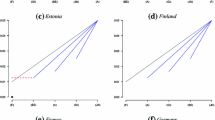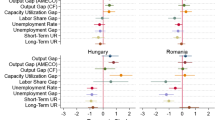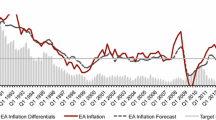Abstract
The persistently low wage and price growth in the EMU after the Great Recession of 2009 led some economic observers to conclude that the Phillips Curve has broken down and that the ECB should therefore reconsider its infl ation target. This study makes use of the considerable cross-country and cross-time heterogeneity in terms of infl ation and capacity utilisation of EMU member states after the Great Recession to investigate whether these claims are corroborated by empirical evidence. The results point to the conclusion that the Phillips Curve is alive and well in the EMU and centred at or only slightly below the ECB’s inflation target. Therefore, a readjustment of the infl ation target seems unjustified. Furthermore, as the ECB can expect inflation to return to its target, it possibly can accelerate tapering its unconventional monetary policy measures as the recovery continues.
Similar content being viewed by others
Author information
Authors and Affiliations
Corresponding author
Additional information
Peter Hennecke, University of Rostock, Germany.
Rights and permissions
About this article
Cite this article
Hennecke, P. A Simple Post-Crisis EMU Phillips Curve — Implications for Monetary Policy. Intereconomics 53, 333–336 (2018). https://doi.org/10.1007/s10272-018-0778-8
Published:
Issue Date:
DOI: https://doi.org/10.1007/s10272-018-0778-8




